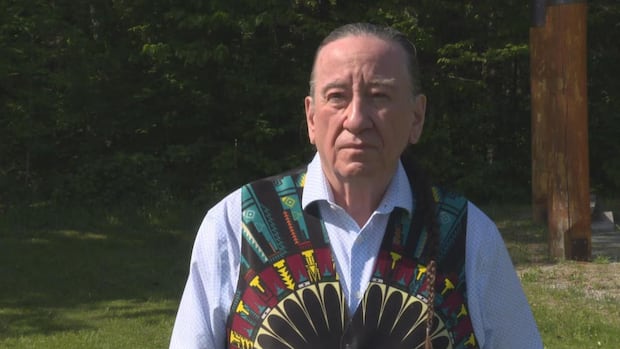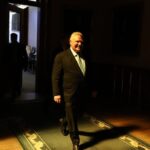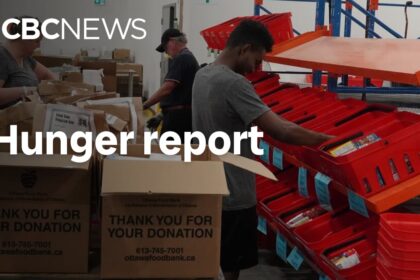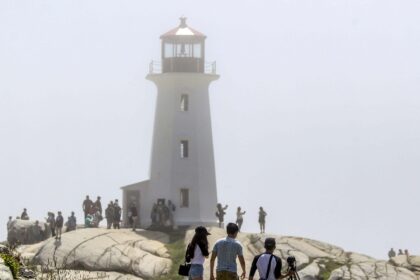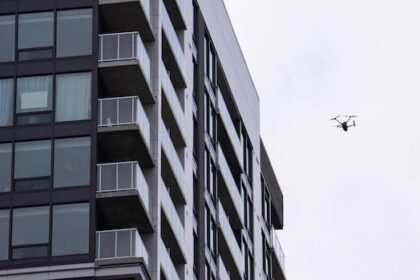OttawaIndigenous communities in Canada believe the return of cultural objects from the Vatican Museum is a step towards reconciliation, but some stress that the items must be returned in a manner that reflects their sacred nature, including holding ceremonies for objects before they leave for Canada.Vatican working with Canadian Catholic Church to return Indigenous objectsListen to this articleEstimated 4 minutesGilbert Whiteduck is the education director and former chief of the Algonquin community Kitigan Zibi Anishinābeg, in western Quebec. (Radio-Canada)Gilbert Whiteduck says the repatriation of Indigenous items from the Vatican museum is an important step towards reconciliation, but the handling of those items needs to be done in a manner that reflects their sacred nature.“It’s not just a matter of taking an object from where it’s sitting in the Vatican archives and museum and just moving them over,” said Whiteduck, the education director for Kitigan Zibi Anishinābeg. “Some of these objects may very well be, depending on what it is, very sacred in themselves. And ceremony would need to be performed before they can even make this travel, the journey back to where they came from.”Assembly of First Nations National Chief Cindy Woodhouse Nepinak released a statement last week announcing the national organization is in discussions to repatriate a number of First Nations items from the Vatican Museums.The Canadian Catholic Church and the Vatican are reportedly making headway towards an agreement to return the objects by year’s end, and the return will be facilitated by the Canadian Conference of Catholic Bishops (CCCB).So far, Whiteduck says he’s had to search online to find any information on these discussions. Moreover, he says there hasn’t been any official list as to what objects could be potentially returned to his community.A ‘church-to-church’ handoffThe items are set to be returned in a “church-to-church” donation, a process Cheyenne Lazore disagrees with.“These First Nations need to see what is actually there and we need to identify what belongs to what nation,” said Lazore, manager of the Akwesasne Rights & Research Office. “There’s a lot of items that were taken and every First Nation will be able to identify what belongs to us. Like there are specific identifiers that we will know what belongs to each community.”The items will first be returned to the Canadian Museum of History in Gatineau, Que., where experts will work with Indigenous representatives to determine where the items will go.This Inuvialuit kayak is being held at the Vatican Museums, along with several other Indigenous artifacts. (Submitted by Ken Lister)First Nations and Indigenous organizations have been calling upon the Vatican for years to return artifacts taken from their communities during the residential school era. In 2022, a delegation of Indigenous leaders in Canada met with Pope Francis and viewed Indigenous artifacts during private tours of the Holy See’s museum.The leaders renewed the calls for repatriation after the appointment of Pope Leo XIV as head of the Catholic Church in May. “The residential schools, the taking of objects by the Vatican were all ways to weaken who we were and who we are,” Whiteduck said, adding that the true history of Indigenous communities’ relationships with the Catholic Church and museums need to be known and understood from the perspective of Indigenous peoples.”I believe it’s not well understood — it’s not well understood why objects that are found in the Vatican are indeed important to us and like I said, contain much more than just the object itself.”For Lazore, the return of the items to individual communities has the potential to bring some peace, but is still far from full reconciliation.”Thank you for returning our items, but a lot of our children still didn’t come home from the residential schools that these are taken from,” she said.Many of these Indigenous items held at the Vatican were sent in the early 1920s, after Pope Pius XI requested Catholic missions around the world donate Indigenous belongings. Approximately 100,000 artifacts were sent to the Vatican, many of which became part of its permanent collection. Among them were a human face mask from Haida Gwaii, a kayak from Inuvialuit and a pair of beaded moccasins.ABOUT THE AUTHORMarissa Meilleur is a reporter for CBC Yukon in Whitehorse. She is a member of the Kwanlin Dün First Nation and she is studying journalism and political science at Carleton University.
Wednesday, 17 Dec 2025
Canada – The Illusion
Search
Have an existing account?
Sign In
© 2022 Foxiz News Network. Ruby Design Company. All Rights Reserved.
You May also Like
- More News:
- history
- Standing Bear Network
- John Gonzalez
- ᐊᔭᐦᑊ ayahp — It happened
- Creation
- Beneath the Water
- Olympic gold medal
- Jim Thorpe
- type O blood
- the bringer of life
- Raven
- Wás’agi
- NoiseCat
- 'Sugarcane'
- The rivers still sing
- ᑲᓂᐸᐏᐟ ᒪᐢᑿ
- ᐅᑳᐤ okâw — We remember
- ᐊᓂᓈᐯᐃᐧᐣ aninâpêwin — Truth
- This is what it means to be human.
- Nokoma


